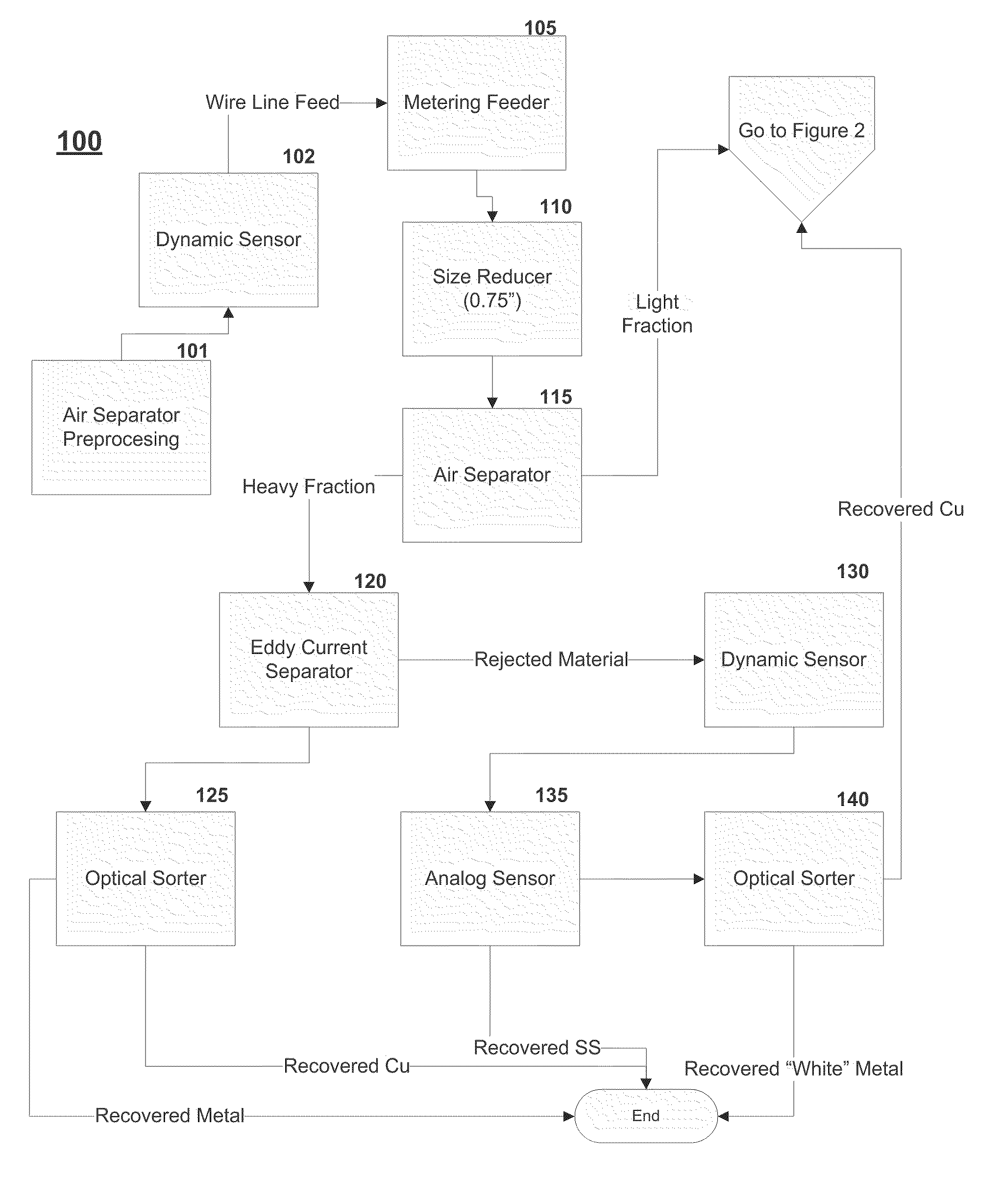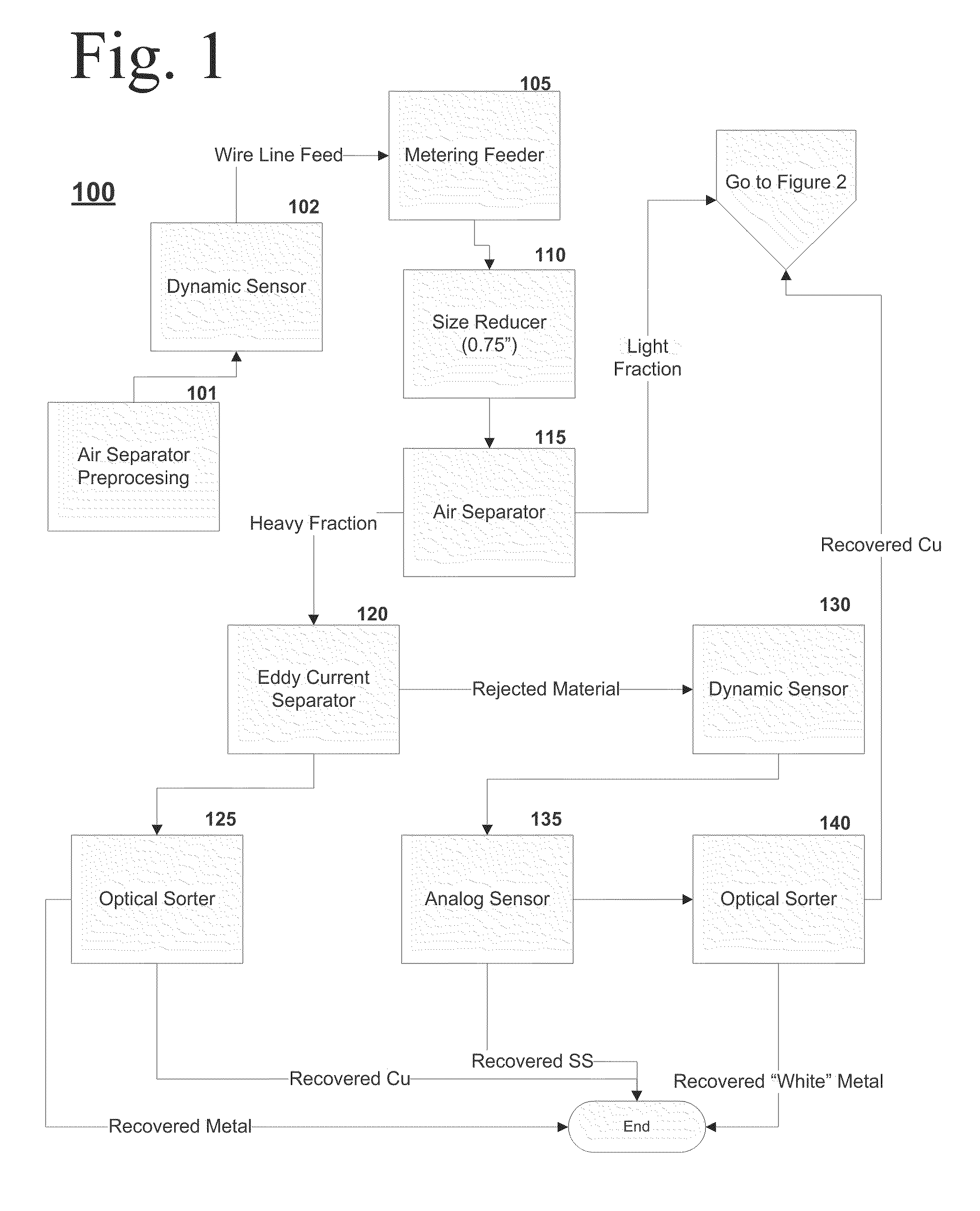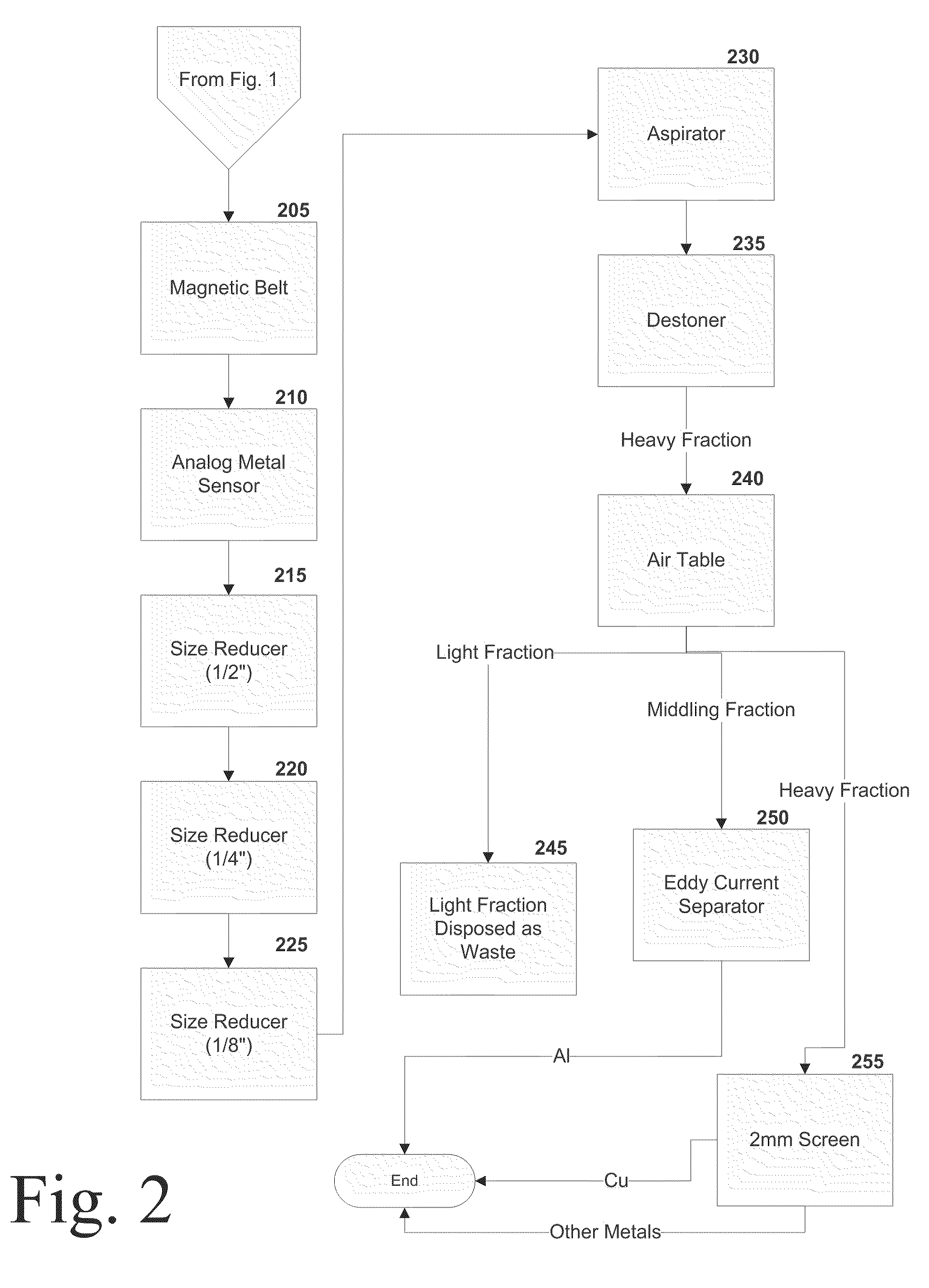Method And System For Recovering Metal From Processed Recycled Materials
a metal and recycled material technology, applied in the field of systems and methods for recovering metals from recycled materials, can solve the problems of inability to effectively sort waste materials containing diverse materials, and inability to meet the needs of customers, etc., to achieve cost-effective, efficient, and reduce landfill. the effect of cos
- Summary
- Abstract
- Description
- Claims
- Application Information
AI Technical Summary
Benefits of technology
Problems solved by technology
Method used
Image
Examples
Embodiment Construction
[0014]Exemplary embodiments of the present invention provide systems and methods for recovering non-ferrous metals, such as copper, employing a dry process.
[0015]FIG. 1 depicts a process flow diagram 100 for recovering non-ferrous metals from a heavy process fraction in accordance with an exemplary embodiment of the present invention. Referring to FIG. 1, at step 105, concentrate from a dynamic sensor concentrating system 102 is added to a metering feeder. Material processed by the dynamic sensor may be preprocessed with an air separator 101. A dynamic sensor differs from an inductive sensor. The dynamic sensor measures the rate of change of the amount of current produced in an inductive loop and detects the presence of metallic objects based on this rate of change. A key difference between a dynamic sensor and a standard inductive sensor is the way the detector filters and interprets the analog current level generated in the inductive loop.
[0016]In a standard inductive sensor, the ...
PUM
| Property | Measurement | Unit |
|---|---|---|
| distance | aaaaa | aaaaa |
| distance | aaaaa | aaaaa |
| specific gravity | aaaaa | aaaaa |
Abstract
Description
Claims
Application Information
 Login to View More
Login to View More - R&D
- Intellectual Property
- Life Sciences
- Materials
- Tech Scout
- Unparalleled Data Quality
- Higher Quality Content
- 60% Fewer Hallucinations
Browse by: Latest US Patents, China's latest patents, Technical Efficacy Thesaurus, Application Domain, Technology Topic, Popular Technical Reports.
© 2025 PatSnap. All rights reserved.Legal|Privacy policy|Modern Slavery Act Transparency Statement|Sitemap|About US| Contact US: help@patsnap.com



